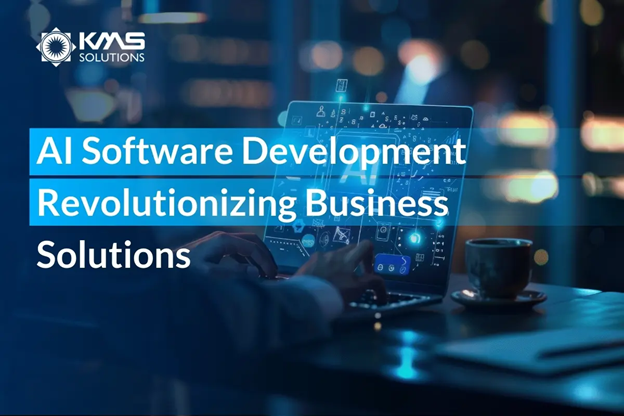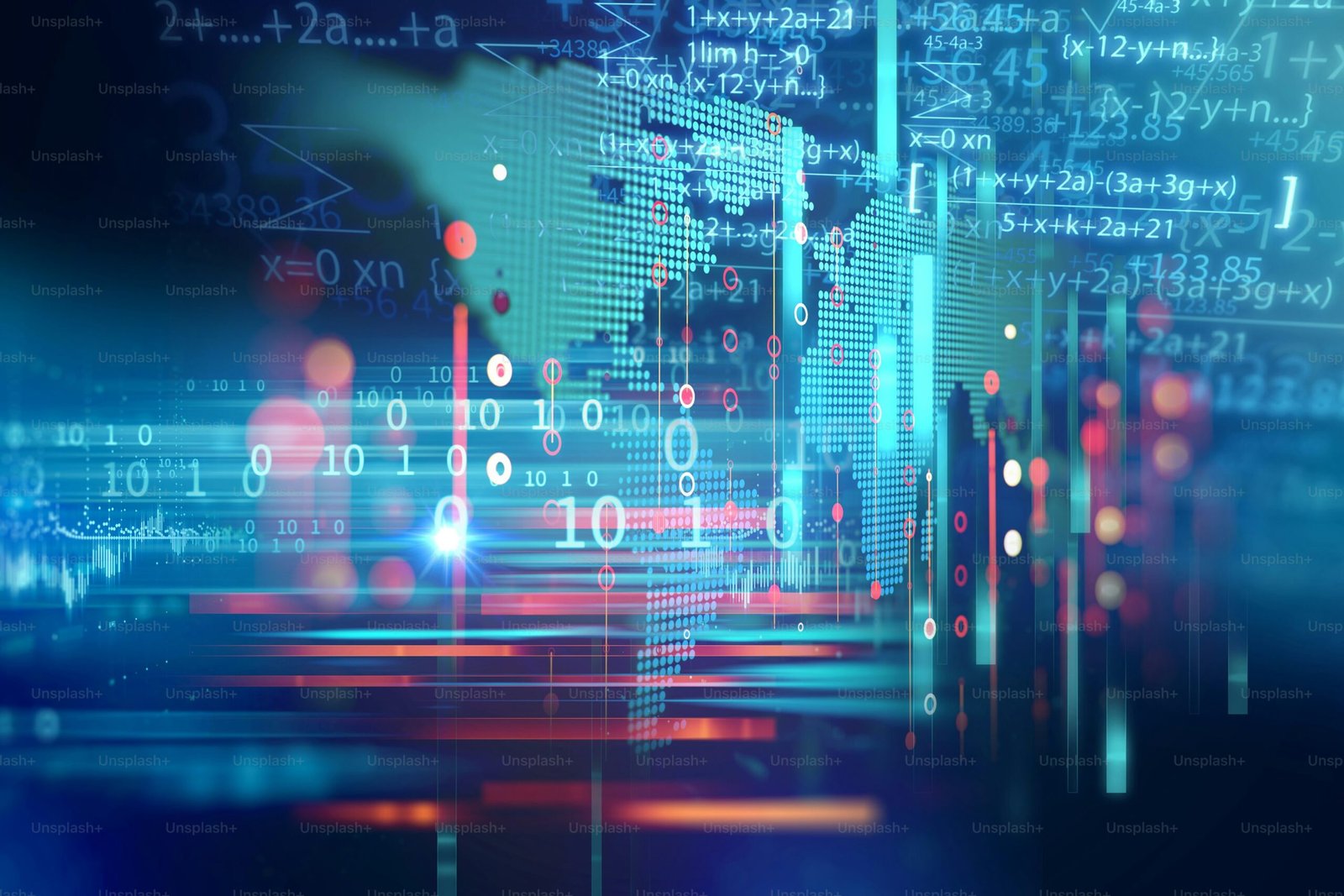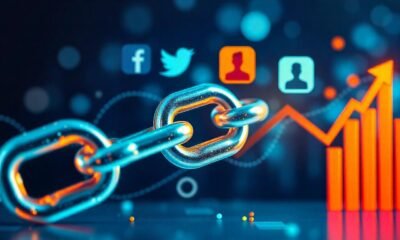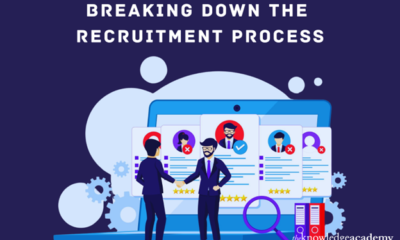Tech
Revolutionizing Business with AI Software Development Services

Introduction
Artificial intelligence (AI) is no longer a futuristic concept—it’s transforming industries today. From automating tasks to predicting customer behavior, AI software development services are helping businesses achieve efficiency, accuracy, and scalability like never before.
But what exactly goes into AI software development? And how can businesses leverage it for a competitive edge? Let’s explore the possibilities and why working with an expert AI software development services provider like Oxagile is the best way forward.
Table of Contents
What Are AI Software Development Services?
AI software development services involve designing, building, and deploying intelligent applications that can:
- Automate repetitive tasks
- Analyze large datasets
- Improve decision-making
- Enhance customer interactions
These solutions use machine learning, natural language processing (NLP), and deep learning to mimic human intelligence and adapt over time.
Why Businesses Are Investing in AI Solutions
AI adoption is skyrocketing, and for good reason:
- Efficiency Boost – AI reduces manual workloads and streamlines operations.
- Cost Savings – Automation minimizes errors and cuts operational expenses.
- Better Decision-Making – AI analyzes vast data sets for actionable insights.
- Personalized User Experiences – AI tailors interactions to individual preferences.
From startups to enterprises, businesses are integrating AI to stay ahead of the competition.
Key Benefits of AI Software Development
1. Automation & Productivity
AI eliminates tedious manual processes, allowing teams to focus on strategic work.
2. Enhanced Accuracy
Machine learning algorithms reduce human errors, leading to more reliable outcomes.
3. Data-Driven Insights
AI-driven analytics uncover patterns, helping businesses make smarter decisions.
4. Improved Customer Experience
Chatbots, recommendation engines, and AI-powered support improve user engagement.
5. Competitive Advantage
AI-powered solutions help businesses innovate faster and outperform competitors.
Types of AI Software Solutions
AI is versatile, catering to different business needs. Here are some popular AI-driven solutions:
AI-Powered Chatbots and Virtual Assistants
Chatbots handle customer inquiries 24/7, reducing response times and improving satisfaction.
Machine Learning and Predictive Analytics
Machine learning models analyze past data to forecast trends, helping businesses make informed decisions.
Natural Language Processing (NLP) Applications
NLP enables AI to understand human language, powering applications like voice assistants and sentiment analysis.
Computer Vision and Image Recognition
AI can interpret images, detect objects, and enable facial recognition for security or automation purposes.
Robotic Process Automation (RPA) for Business Efficiency
RPA automates repetitive tasks like data entry, invoice processing, and HR onboarding, reducing manual workload.
The AI Software Development Process
Building AI-powered solutions involves several key steps:
1️⃣ Understanding Business Needs – Identifying challenges and opportunities AI can address.
2️⃣ Data Collection & Preparation – Gathering and cleaning data to train AI models.
3️⃣ Model Development & Training – Using machine learning algorithms to develop intelligent solutions.
4️⃣ Testing & Validation – Ensuring accuracy and reliability before deployment.
5️⃣ Deployment & Integration – Implementing AI solutions into existing systems.
6️⃣ Ongoing Monitoring & Optimization – Continuously refining AI models for better performance.
Choosing the Right AI Development Partner
Selecting the right AI development company is crucial. Here’s what to look for:
✔️ Expertise in AI and machine learning
✔️ Proven track record in delivering AI-driven solutions
✔️ Ability to integrate AI with existing software
✔️ Strong focus on security and compliance
✔️ Ongoing support and maintenance
Why Oxagile is a Leading Provider of AI Software Development Services
When it comes to AI software development services, Oxagile stands out as an industry leader. Here’s why businesses trust them:
✅ Custom AI Solutions – Tailored to meet specific business needs
✅ Cutting-Edge Technologies – Leveraging machine learning, NLP, and deep learning
✅ Scalable AI Models – Designed for growth and adaptability
✅ Proven Industry Experience – Trusted by enterprises across multiple sectors
Oxagile’s AI solutions empower businesses to drive innovation, improve efficiency, and enhance decision-making.
Future Trends in AI Software Development
AI is evolving rapidly, and these trends will shape the future:
🚀 AI-Powered Automation – More businesses will adopt AI-driven workflows.
📊 Hyper-Personalization – AI will enhance personalized marketing and recommendations.
🔍 Explainable AI (XAI) – Increased transparency in AI decision-making.
🛡 AI for Cybersecurity – Strengthened defenses against cyber threats.
🌍 Sustainable AI – AI will help businesses achieve eco-friendly operations.
Staying ahead of these trends ensures long-term success in the AI landscape.
Final Thoughts: Unlocking AI’s Potential for Your Business
AI isn’t just the future—it’s happening now. Businesses that embrace AI software development gain a strategic advantage in efficiency, decision-making, and customer experience.
If you’re ready to integrate AI into your business, partnering with a trusted provider like Oxagile ensures you get top-tier solutions designed for success.
AI is transforming industries—don’t get left behind. Take the first step today!
FAQs
1. How long does it take to develop an AI-powered solution?
It depends on complexity. Simple AI applications take 3-6 months, while advanced systems can take over a year.
2. What industries benefit the most from AI software development?
AI is widely used in healthcare, finance, retail, manufacturing, and customer service sectors.
3. How much does AI software development cost?
Costs vary based on project scope, data requirements, and AI model complexity. Contact Oxagile for a custom quote.
4. What’s the difference between AI and machine learning?
AI is the broader concept of machines simulating human intelligence, while machine learning is a subset focusing on algorithms that learn from data.
5. How do I get started with AI software development?
Start by consulting with an expert team like Oxagile to assess your business needs and define a development plan.
Tech
The Sustainability Revolution in Data Science: Green AI and Beyond

How Environmental Responsibility Is Reshaping the Data Industry
As the global push for sustainability accelerates, the data science industry is facing a new challenge: how to innovate responsibly. Large-scale data processing, especially in machine learning and AI, can be energy-intensive, consuming vast amounts of electricity for computation and cooling. This reality has influenced how future professionals are trained, with a modern data science course increasingly including lessons on environmental impact and responsible innovation.
In parallel, organizations are recognizing that a data science online course designed around sustainability is not just a learning pathway but a reflection of how the industry itself is evolving. In 2025, companies are under increasing pressure to reduce the environmental footprint of their digital operations giving rise to the movement known as Green AI.
Table of Contents
Green AI is about building and deploying AI systems with minimal environmental impact. This involves optimizing algorithms for efficiency, choosing energy-efficient hardware, and using renewable-powered data centers. While the shift is partly driven by regulatory changes, it’s also a reflection of growing consumer demand for sustainable practices. Increasingly, businesses are judged not just by the accuracy of their algorithms or the speed of their analytics, but by how responsibly they manage the environmental cost of innovation.
Why Sustainability Matters in Data Science
A single large AI training run can consume more energy than several households use in a year. For companies building AI models at scale, these numbers are not only environmentally concerning but also financially significant. Energy bills can skyrocket, cooling demands can strain infrastructure, and carbon emissions from non-renewable energy sources can harm corporate reputations. By adopting greener practices, organizations can reduce operational costs while also demonstrating environmental responsibility.
The push for green data practices has also influenced hiring. Companies are now seeking professionals who understand both data science and environmental considerations—individuals who can design algorithms that balance accuracy with efficiency. This has led to the emergence of hybrid skill sets that blend technical expertise with sustainability knowledge. For instance, a data scientist who can cut model training time in half without compromising performance is delivering both business and environmental value.
This shift signals a broader truth: sustainability is not just a corporate buzzword anymore. It is directly shaping job roles, influencing investment decisions, and even becoming a competitive differentiator. In industries such as finance, healthcare, and manufacturing, clients and partners increasingly prefer working with firms that can demonstrate responsible data practices. This is reshaping the professional identity of the modern data scientist into one who is not only technically competent but also environmentally conscious.
The Costs of Ignoring Environmental Impact
Failing to account for sustainability can have long-term consequences. Regulators around the world are introducing stricter climate-related disclosures, and companies that ignore environmental metrics risk penalties, loss of investor confidence, and reputational damage. In Europe, for example, data centers are already subject to efficiency reporting requirements, and similar measures are expected globally.
There is also a human element at play. Employees—particularly younger professionals—are increasingly drawn to organizations that reflect their values. A company that disregards environmental responsibility may find it harder to attract and retain top talent. As data science continues to grow in visibility and influence, its environmental footprint becomes part of the broader conversation around corporate social responsibility.
Moreover, consumers themselves are becoming more informed. Public awareness of the carbon cost of streaming, gaming, and cloud services has already led to pressure on technology providers. It is only a matter of time before the same scrutiny applies to the world of AI and data science. The question will not just be what can your model do? but also what did it cost the planet to create it?
Also, explore Ganesh Institute of Engineering and Technology Review
Green AI in Practice
The concept of Green AI is not limited to lofty ideals—it is being implemented in concrete ways. Researchers are focusing on algorithmic efficiency, reducing the number of parameters without sacrificing accuracy. Hardware companies are innovating chips that require less power to process vast amounts of data. Cloud providers are investing heavily in renewable energy, with some pledging to achieve carbon neutrality within this decade.
On the ground, this means data teams are rethinking workflows. Instead of defaulting to massive, resource-hungry models, they experiment with smaller, more efficient architectures. They analyze whether accuracy gains justify the energy cost, and they track metrics like carbon usage per computation. This represents a fundamental change in mindset, where efficiency is treated as equally important as performance.
Even small adjustments can yield significant results. Techniques like pruning, quantization, and knowledge distillation can dramatically cut down energy consumption in model training. Similarly, selecting the right data center region preferably one powered by renewables—can lower the carbon footprint of projects without requiring major sacrifices in performance.
Preparing for the Future of Green AI
For data professionals, understanding how to work sustainably is becoming a valuable skill. This might mean learning how to optimize neural networks, select low-energy cloud options, or integrate environmental metrics into analytics dashboards. Many of these topics are now being introduced in modern training programs, with a data science course often including modules on ethical and sustainable AI practices.
Looking forward, sustainability won’t be a niche concern—it will be a core requirement for how technology operates. Companies that fail to embed sustainable practices risk being left behind, while those that lead will define industry standards. For aspiring professionals, this means building a skill set that blends data science expertise with awareness of environmental impact. It is no longer enough to know how to train a model—you must also know how to train it responsibly.
Another trend to watch is the integration of sustainability metrics into product design. Just as cost, performance, and scalability are considered in technical decisions, so too will carbon impact and energy use. Data scientists may soon find themselves presenting not just accuracy scores, but also environmental trade-offs in their reports. This broadens the role of the profession and strengthens its importance in guiding corporate strategy.
And for those starting their journey or looking to reskill, a thoughtfully designed data science online course can be the gateway to mastering these future-ready capabilities. Such programs increasingly cover not just the technical core of data analysis and machine learning, but also the ethical and environmental dimensions that will define the next decade of practice.
Beyond Green AI: A Broader View of Sustainability
While energy efficiency in AI is the most visible aspect of Green AI, the sustainability conversation in data science is wider. Data storage practices, for instance, also carry environmental costs. Organizations are now exploring smarter data lifecycle management—archiving or deleting unused data, compressing storage, and preventing unnecessary duplication.
There is also a social dimension. Responsible data science considers the human cost of data collection and usage. Sustainable practices must therefore include fairness, transparency, and accountability, ensuring that environmental responsibility does not overshadow ethical responsibility. The idea is to build data ecosystems that are not just greener, but also more humane.
As AGI and advanced AI systems approach practical reality, the sustainability challenge will intensify. Training models of unprecedented scale will require even more careful consideration of their environmental footprint. This creates both urgency and opportunity: urgency to act responsibly now, and opportunity for data scientists who can pioneer sustainable approaches in a rapidly evolving field.
Conclusion
The sustainability revolution in data science is not a passing trend it is a structural shift in how technology is imagined, built, and deployed. Green AI is just the beginning of a larger transformation, one where innovation must coexist with responsibility. Companies that embrace this change will not only reduce costs and comply with regulations but also earn trust from consumers, employees, and society at large.
For data scientists, this moment represents both a challenge and an opportunity. The challenge lies in mastering new techniques, adapting workflows, and accepting responsibility for environmental impact. The opportunity lies in being part of a movement that defines the future of technology not just in terms of performance, but also in terms of its harmony with the planet.
The data industry is entering an era where sustainability is no longer optional. As the world demands cleaner, smarter, and more responsible innovation, those who align their skills with this vision will shape the future. Green AI is not just about algorithms or data centers—it is about rethinking the very purpose of technological progress. In this redefined landscape, data science stands not only as a tool for insight and efficiency but also as a driver of environmental responsibility.
Tech
Why I Moved from Discord to Fambase and Built My Own Photography Community

Why I Decided to Leave Discord
Like many photography enthusiasts, I initially chose Discord as the place to build my community. At first the energy was exciting: conversations never stopped and people from everywhere dropped in. Yet the chaos soon outweighed the benefits. My tutorials, editing steps, and photo collections constantly sank under waves of chatter. Even when pinned, newcomers had no clue where to start. The same question kept coming up: “Where is last week’s portrait tutorial?”
The feeling reminded me of showing my work in a crowded lobby where voices echo, doors slam, and no one can focus long enough to notice the photographs on the wall. Attention was fragmented, commitment was thin, and my images—meant to tell stories—were reduced to files dropped into a noisy feed.
Table of Contents
Monetization was no easier. I had to rely on third-party plug-ins to sell a print or course, which forced fans to jump between platforms and caused many to give up halfway. On top of that, Discord’s complex channel system and permission settings demanded more time than I expected. I often felt like an administrator rather than a photographer.
It became obvious that Discord functioned well as a public forum but not for someone who wanted to teach, sell, and keep a focused circle together.
How I Built My Community on Fambase

Switching to Fambase felt like stepping from that lobby into a quiet exhibition room. Setting up was straightforward. I uploaded a photo, wrote a short introduction that read “This is my private garden for photography lovers”, and selected the Artists & Creators category. For those who wish to sell prints or run auctions, there is also a Marketplace option.
Inviting people is much easier as well. I rely on QR codes at exhibitions, on postcards, and even in social media posts. A simple scan gives instant access, which feels far more natural than Discord’s long and confusing links.
What really changed things was the sense of privacy. Messages, images, and videos disappear after twenty-four hours, so the group never feels cluttered. Live streams cannot be casually copied or redistributed, which makes me comfortable sharing unfinished drafts or behind-the-scenes details. Fans often treat each post as a fleeting moment, which gives our interactions a special value.
Content presentation is also more logical. I can share public posts for everyone, unlock advanced tutorials once a fan reaches a certain level of support, and reveal exclusive works when a gift is sent. This creates a natural progression for newcomers while rewarding long-term supporters with unique access.
Community tools strengthen engagement as well. Polls allow fans to choose the next theme, goals motivate collective support, and live classes can be scheduled in advance. The integration of auctions has been particularly valuable because fans can now bid on prints while I am live-streaming the story behind each photo.
Managing fans is efficient. I can see their activity timeline, add notes such as “purchased photo book” or “course participant,” and adapt how I interact. During live sessions, fans can enlarge camera angles or even share their own photos for real-time feedback. This creates a far richer learning environment than simply posting images into a chat.
What I Gained and Learned
The contrast between Discord and Fambase could not be clearer. Discord feels like a noisy public square, while Fambase feels like a personal gallery. Here my work is coherent, my relationships are cultivated, and creative energy flows back into photography instead of administration. Auctions turn photos into collectibles, polls give fans a role in decision making, and the twenty-four-hour rhythm makes every post feel intentional.
If I have one complaint about Fambase, it is the absence of a true gallery wall. Photography is more than isolated images—it is a story told through sequence and rhythm. In an exhibition, viewers do not simply glance at a single frame; they walk slowly along the wall, pausing, comparing, and letting one image echo into the next. That movement through a collection is what turns photographs into a narrative.
On Fambase, everything appears in a flowing stream of posts. It works for conversation, but sometimes I wish my community could wander through my work as if they were stepping into a curated room. A dedicated gallery or portfolio wall would allow images to stand together, forming a timeline of experiments, breakthroughs, and evolving themes. Fans could return to earlier chapters of the story, not just catch fleeting glimpses of the present.
Still, this shortcoming feels minor compared to what I have gained. Some fans even joke that they cannot secretly save my behind-the-scenes shots because screenshots trigger an alert. It sounds like a complaint, but it is exactly the reason I feel comfortable sharing drafts in the first place.
For anyone in photography, art, or education, I would strongly recommend exploring Fambase. Public platforms like Instagram are useful for visibility, but long-term growth depends on private spaces where audiences stay committed. Build that small and intentional community and invite the people who truly care.
For me, Fambase has become a studio, a gallery, and a classroom all in one. It is calmer, safer, and more focused. And if one day a gallery wall is added, I imagine it will feel like unlocking an entire wing of the museum we are already building together.
Tech
Flooring Supplier for Contractors: Must-Have Qualities

In the fast-paced world of construction and renovation, time is money, and so is trust. For flooring contractors, success hinges not only on skill but also on reliable supply chains. That’s where finding the right flooring supplier for contractors becomes critical. A dependable supplier doesn’t just provide materials. They become a partner in your project’s success.
But with so many suppliers on the market, how do you know which is worth your business? Below, we explore the must-have qualities every contractor should look for in a flooring supplier, so you can avoid delays, minimize costs, and ensure every project finishes on time and under budget.
Table of Contents
1. Extensive Product Selection
A top-tier flooring supplier for contractors should offer various products suitable for different project types. From luxury vinyl plank (LVP) and laminate to carpet tiles and commercial-grade hardwood, contractors need a one-stop shop to avoid juggling multiple vendors.
Why it matters:
- Cuts down sourcing time.
- Ensures product compatibility across rooms or units.
- Offers solutions for both high-end and budget-conscious clients.
According to industry data, vinyl and laminate flooring make up over 55% of all residential flooring purchases, making their consistent availability crucial.
2. Bulk Pricing and Wholesale Discounts
Contractors typically buy in large volumes and should be rewarded for it. A great supplier will offer bulk pricing, special trade discounts, or tiered pricing models based on order size or frequency.
Key Features:
- Transparent pricing structure.
- Volume discounts that scale.
- Exclusive deals for repeat contractor clients.
These savings can significantly impact your profit margins, especially on projects over 1,000 sq. ft., where a 10% discount could mean hundreds in savings.
3. Reliable Inventory and Fast Turnaround
Delays in product availability can halt entire jobs. A dependable flooring supplier should maintain high stock levels and offer quick delivery or pickup options, especially when working on tight schedules.
Signs of reliability:
- Real-time inventory tracking.
- Same-day or next-day delivery options.
- Regional warehouses or showrooms.
A 2023 survey revealed that 68% of contractors experienced project delays due to back-ordered materials. A responsive supplier helps avoid costly downtime.
4. Quality Assurance and Trusted Brands
The quality of your installation is only as good as the materials you use. That’s why the best flooring supplier for contractors will stock trusted, proven brands and vet new products before offering them to customers.
Look for suppliers that:
- Offer flooring with industry-standard certifications (e.g., FloorScore, GreenGuard).
- Stand behind their products with warranties.
- Allow sample testing before bulk ordering.
This builds trust with your clients and protects your reputation in the long run.
5. Contractor Support and Expertise
Contractors are busy people. A supplier should make your job easier, not harder. Choose a partner who provides dedicated support, from knowledgeable account managers to flooring specialists who can help with product specs, installation methods, and compatibility.
Top suppliers also offer:
- Technical documents or data sheets.
- Installation guides and compliance resources.
- Access to exclusive contractor training or certification programs.
This level of service gives you an edge when bidding for jobs or discussing options with clients.
6. Flexible Logistics and Job-Site Delivery
Whether you’re working on a new build or a quick flip, time is tight, and space is limited. An innovative flooring supplier should offer job-site delivery, scheduled drop-offs, and easy returns.
Ideal logistics features:
- Curbside delivery or inside placement.
- GPS tracking of shipments.
- Quick reorders or flexible resupply options.
Coordinating deliveries precisely can shave off hours, even days, from project timelines.
7. Digital Tools and Online Ordering
In today’s digital age, contractors need modern tools to manage projects. A good flooring supplier for contractors offers an intuitive online platform for ordering, tracking, and browsing inventory.
What to look for:
- Mobile-friendly interface.
- Contractor portal with saved quotes and order history.
- Live chat or online support.
According to recent trends, 47% of contractors now prefer suppliers that offer online ordering, making it an essential part of doing business efficiently.
8. Positive Reviews and Industry Reputation
Finally, reputation speaks volumes. Look for well-reviewed flooring suppliers recommended by fellow contractors with a solid track record in the industry.
How to verify:
- Read online reviews (Google, Houzz, BBB).
- Ask for client testimonials or references.
- Check to see if the supplier is affiliated with national trade organizations like the National Association of Home Builders (NAHB).
A supplier’s reliability today ensures smoother projects tomorrow.
Final Thoughts
Finding the right flooring supplier for contractors isn’t just about comparing price tags. It’s about building a partnership that helps your business thrive. The ideal supplier will offer more than flooring. They’ll provide speed, reliability, service, and support that keep your projects running smoothly from estimate to installation.
As competition increases and customer expectations rise, aligning with a high-quality supplier gives you a strategic advantage. So whether you’re outfitting a new construction project or upgrading a multi-family rental, ensure your supplier checks every box because your success depends on it.
-

 Games9 months ago
Games9 months agoMeerut City Satta King: Your Ultimate Guide to Winning!
-

 Business9 months ago
Business9 months agoDiscover Why debsllcs.org/ Is Leading in Sustainable Business Solutions
-

 Blog8 months ago
Blog8 months agoThe Importance of Hiring Commercial Movers
-

 Fashion11 months ago
Fashion11 months agoEssentials Clothing: Bold Statements in Minimalist Designs
-

 Tech6 months ago
Tech6 months agoWhy SEO is No Longer Just About Rankings
-

 Tech9 months ago
Tech9 months agovstechpanel.com Off-Page SEO: Boost Your Site’s Authority Now!
-

 Tech9 months ago
Tech9 months agoHow Do I Contact Hong Kong Reverse Technology Now for Solutions?
-

 Business1 year ago
Business1 year agoBreaking Down the Recruitment Process












